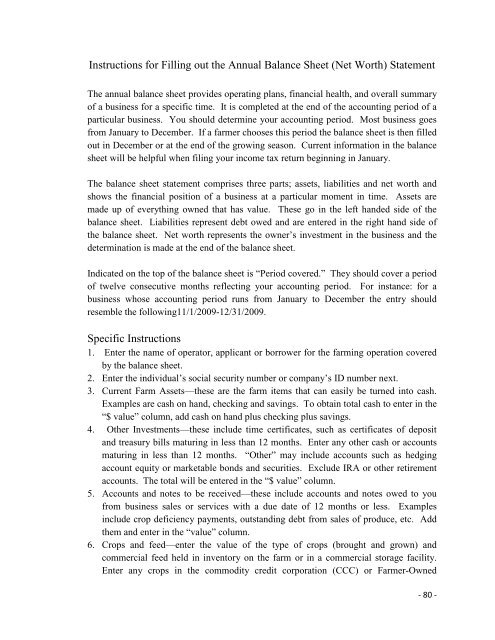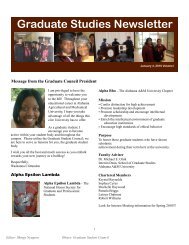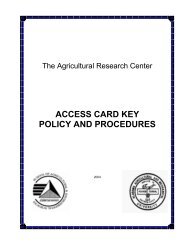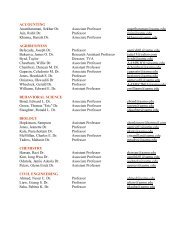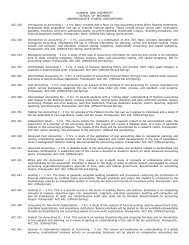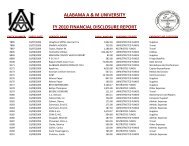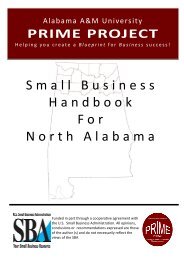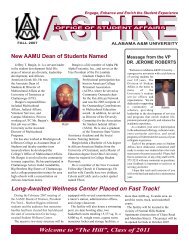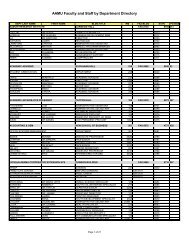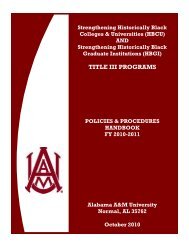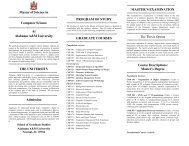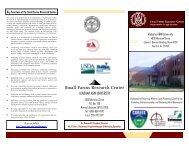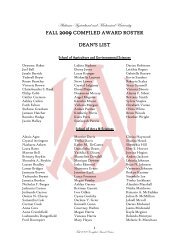Record Keeping B Agribusiness Farmers and Land Record Keeping ...
Record Keeping B Agribusiness Farmers and Land Record Keeping ...
Record Keeping B Agribusiness Farmers and Land Record Keeping ...
- No tags were found...
You also want an ePaper? Increase the reach of your titles
YUMPU automatically turns print PDFs into web optimized ePapers that Google loves.
Instructions for Filling out the Annual Balance Sheet (Net Worth) StatementThe annual balance sheet provides operating plans, financial health, <strong>and</strong> overall summaryof a business for a specific time. It is completed at the end of the accounting period of aparticular business. You should determine your accounting period. Most business goesfrom January to December. If a farmer chooses this period the balance sheet is then filledout in December or at the end of the growing season. Current information in the balancesheet will be helpful when filing your income tax return beginning in January.The balance sheet statement comprises three parts; assets, liabilities <strong>and</strong> net worth <strong>and</strong>shows the financial position of a business at a particular moment in time. Assets aremade up of everything owned that has value. These go in the left h<strong>and</strong>ed side of thebalance sheet. Liabilities represent debt owed <strong>and</strong> are entered in the right h<strong>and</strong> side ofthe balance sheet. Net worth represents the owner’s investment in the business <strong>and</strong> thedetermination is made at the end of the balance sheet.Indicated on the top of the balance sheet is “Period covered.” They should cover a periodof twelve consecutive months reflecting your accounting period. For instance: for abusiness whose accounting period runs from January to December the entry shouldresemble the following11/1/2009-12/31/2009.Specific Instructions1. Enter the name of operator, applicant or borrower for the farming operation coveredby the balance sheet.2. Enter the individual’s social security number or company’s ID number next.3. Current Farm Assets—these are the farm items that can easily be turned into cash.Examples are cash on h<strong>and</strong>, checking <strong>and</strong> savings. To obtain total cash to enter in the“$ value” column, add cash on h<strong>and</strong> plus checking plus savings.4. Other Investments—these include time certificates, such as certificates of deposit<strong>and</strong> treasury bills maturing in less than 12 months. Enter any other cash or accountsmaturing in less than 12 months. “Other” may include accounts such as hedgingaccount equity or marketable bonds <strong>and</strong> securities. Exclude IRA or other retirementaccounts. The total will be entered in the “$ value” column.5. Accounts <strong>and</strong> notes to be received—these include accounts <strong>and</strong> notes owed to youfrom business sales or services with a due date of 12 months or less. Examplesinclude crop deficiency payments, outst<strong>and</strong>ing debt from sales of produce, etc. Addthem <strong>and</strong> enter in the “value” column.6. Crops <strong>and</strong> feed—enter the value of the type of crops (brought <strong>and</strong> grown) <strong>and</strong>commercial feed held in inventory on the farm or in a commercial storage facility.Enter any crops in the commodity credit corporation (CCC) or Farmer-Owned- 80 -


